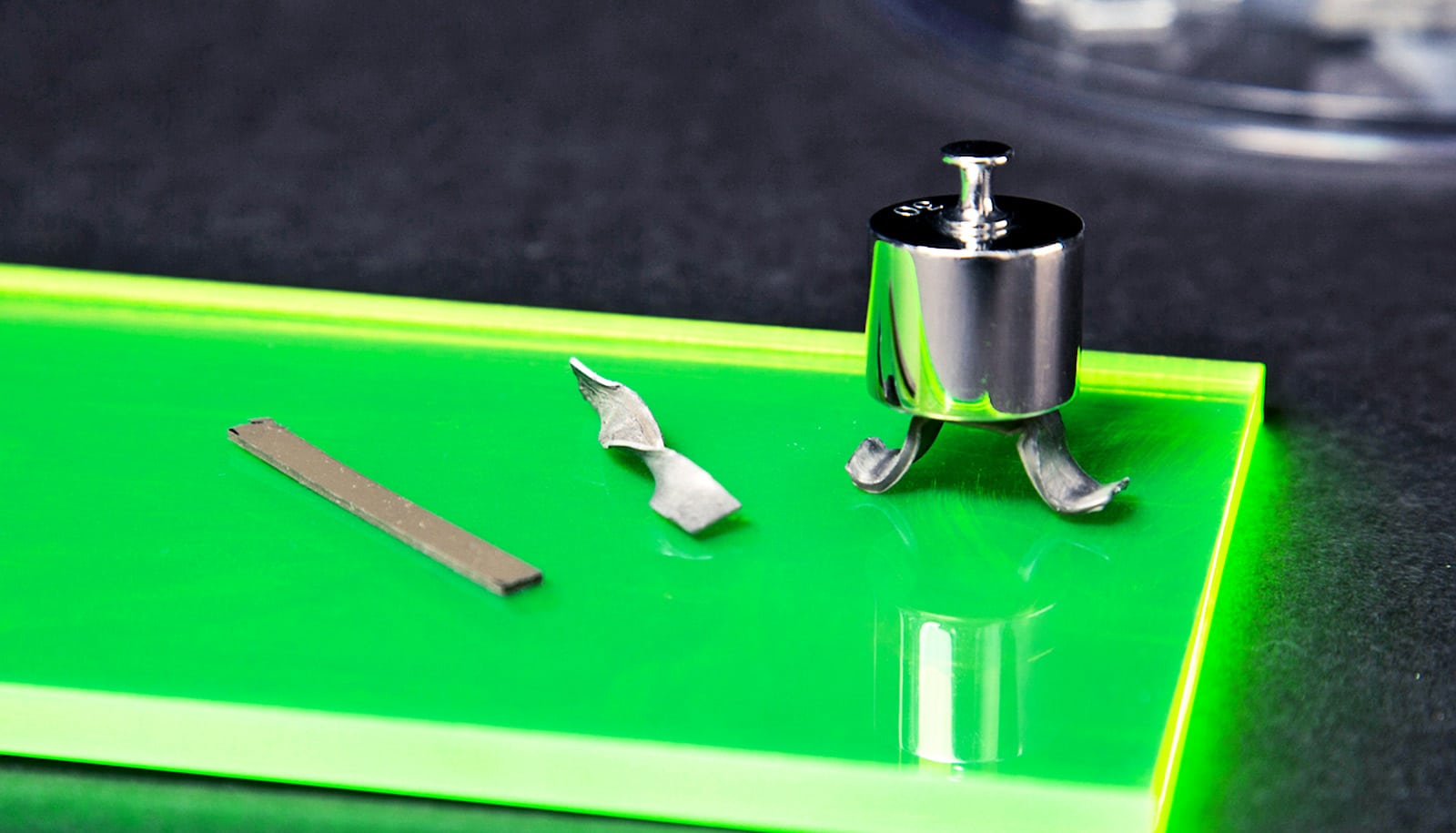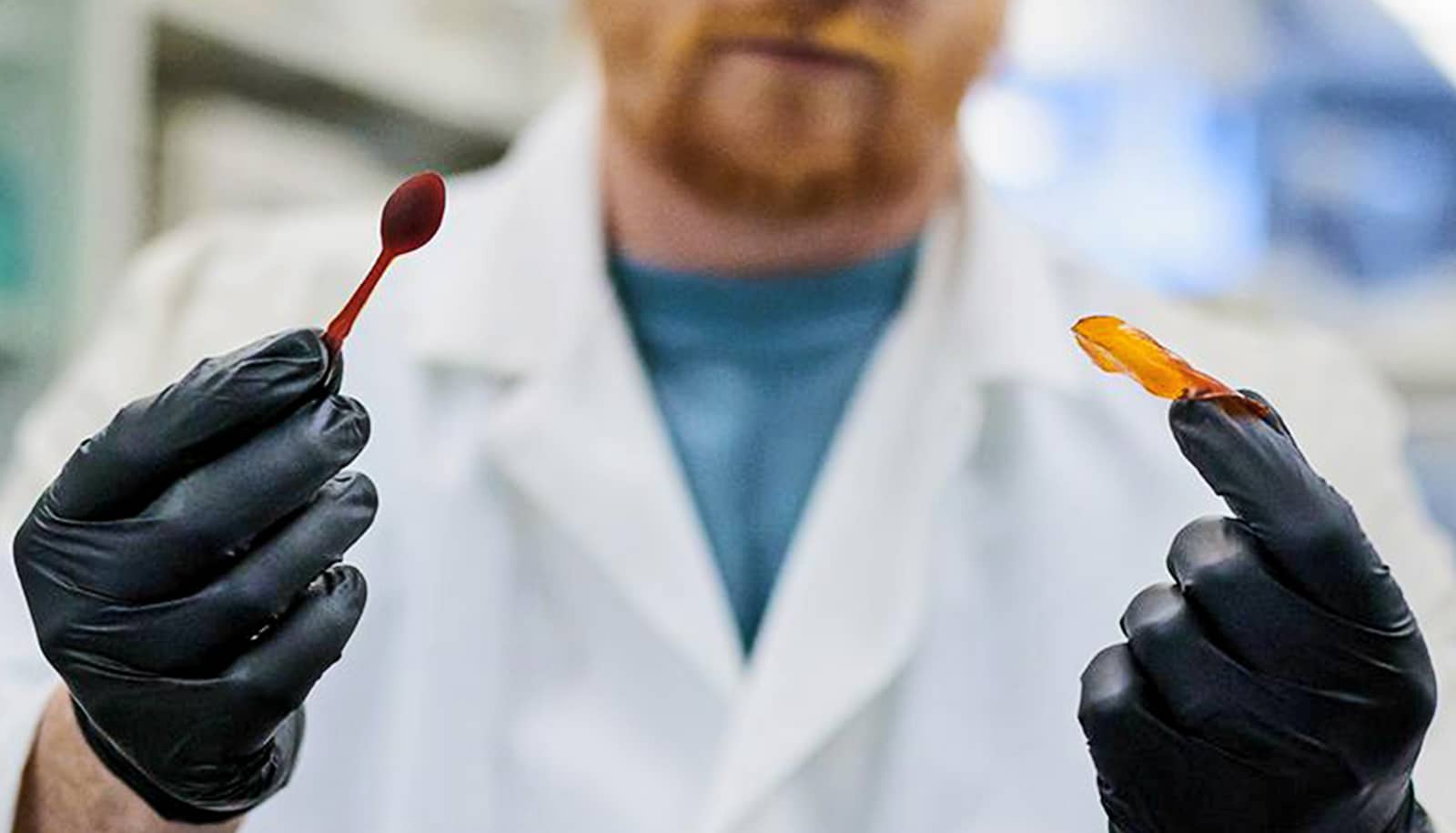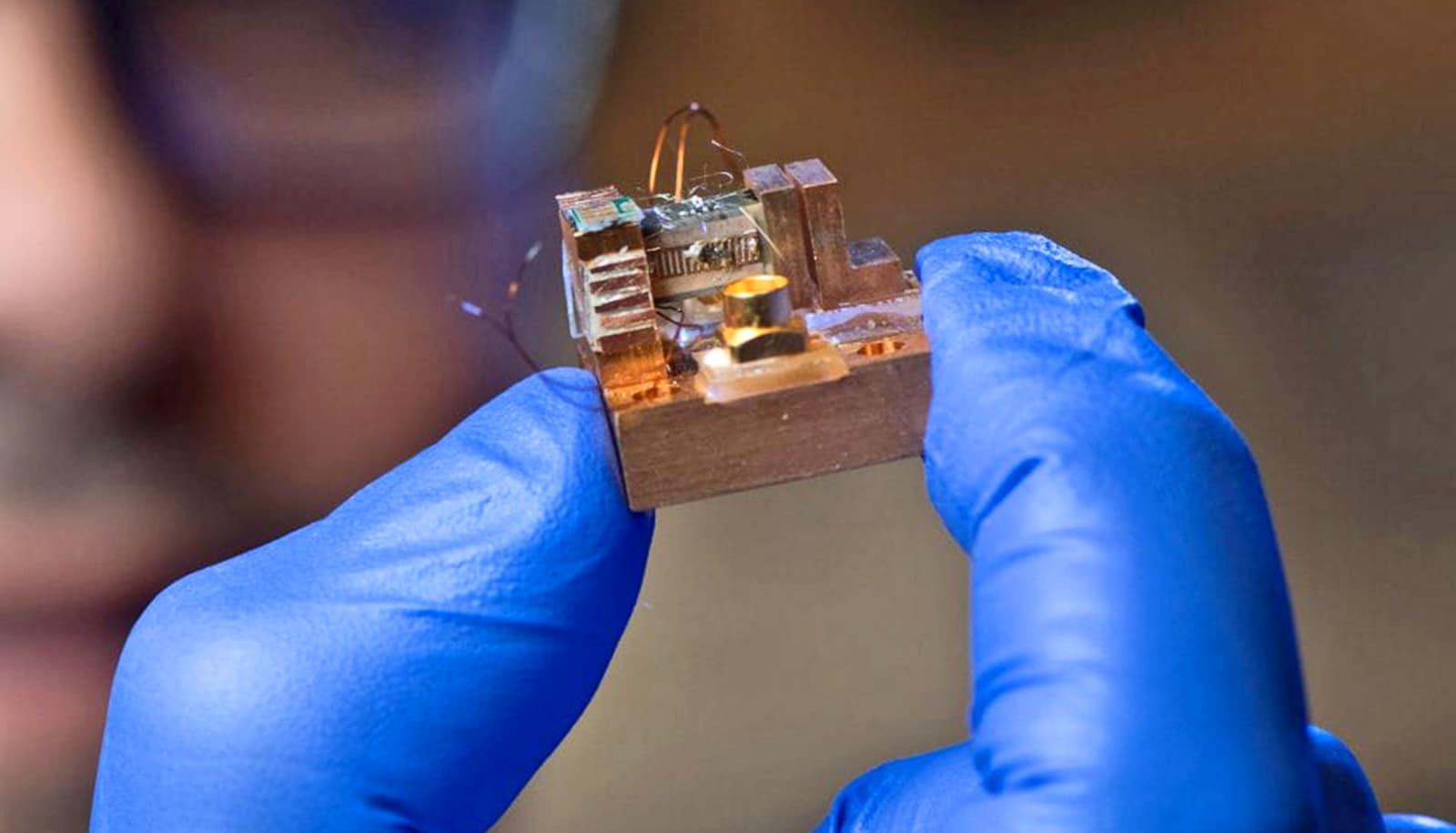Stress a muscle and it gets stronger. Mechanically stress a new rubbery material—say with a twist or a bend—and the it automatically stiffens by up to 300 percent, the engineers says.
In lab tests, mechanical stresses transformed a flexible strip of the material into a hard composite that can support 50 times its own weight.
…the new material could be used in medicine to support delicate tissues or in industry to protect valuable sensors.
This new composite material doesn’t need outside energy sources such as heat, light, or electricity to change its properties. And it could be used in a variety of ways, including applications in medicine and industry.
The researchers found a simple, low-cost way to produce particles of undercooled metal—that’s metal that remains liquid even below its melting temperature. Researchers created the tiny particles (they’re just 1 to 20 millionths of a meter across) by exposing droplets of melted metal to oxygen, creating an oxidation layer that coats the droplets and stops the liquid metal from turning solid. They also found ways to mix the liquid-metal particles with a rubbery elastomer material without breaking the particles.
When this hybrid material is subject to mechanical stresses—pushing, twisting, bending, squeezing—the liquid-metal particles break open. The liquid metal flows out of the oxide shell, fuses together, and solidifies.
“You can squeeze these particles just like a balloon,” says lead author Martin Thuo, assistant professor of materials science and engineering at Iowa State University. “When they pop, that’s what makes the metal flow and solidify.”
The result, lead author Michael Bartlett says, is a “metal mesh that forms inside the material.”
Octopus-inspired material morphs from flat to 3D
Thuo and Bartlett, also an assistant professor of materials science and engineering at Iowa State, say the popping point can be tuned to make the liquid metal flow after varying amounts of mechanical stress. Tuning could involve changing the metal used, changing the particle sizes, or changing the soft material.
In this case, the liquid-metal particles contain Field’s metal, an alloy of bismuth, indium, and tin. But Thuo says other metals will work, too.
“The idea is that no matter what metal you can get to undercool, you’ll get the same behavior,” he says.
The engineers say the new material could be used in medicine to support delicate tissues or in industry to protect valuable sensors. There could also be uses in soft and bio-inspired robotics or reconfigurable and wearable electronics.
“A device with this material can flex up to a certain amount of load,” Bartlett says. “But if you continue stressing it, the elastomer will stiffen and stop or slow down these forces.”
Squishy motor lets soft robots crawl over rocks
The researchers describe the material in a paper in the journal Materials Horizons.
The Iowa State University Research Foundation is working to patent the material, which is available for licensing. Iowa State startup funds for Thuo and Bartlett supported development of the new material. Thuo’s faculty fellowship also helped support the project.
Source: Iowa State University



